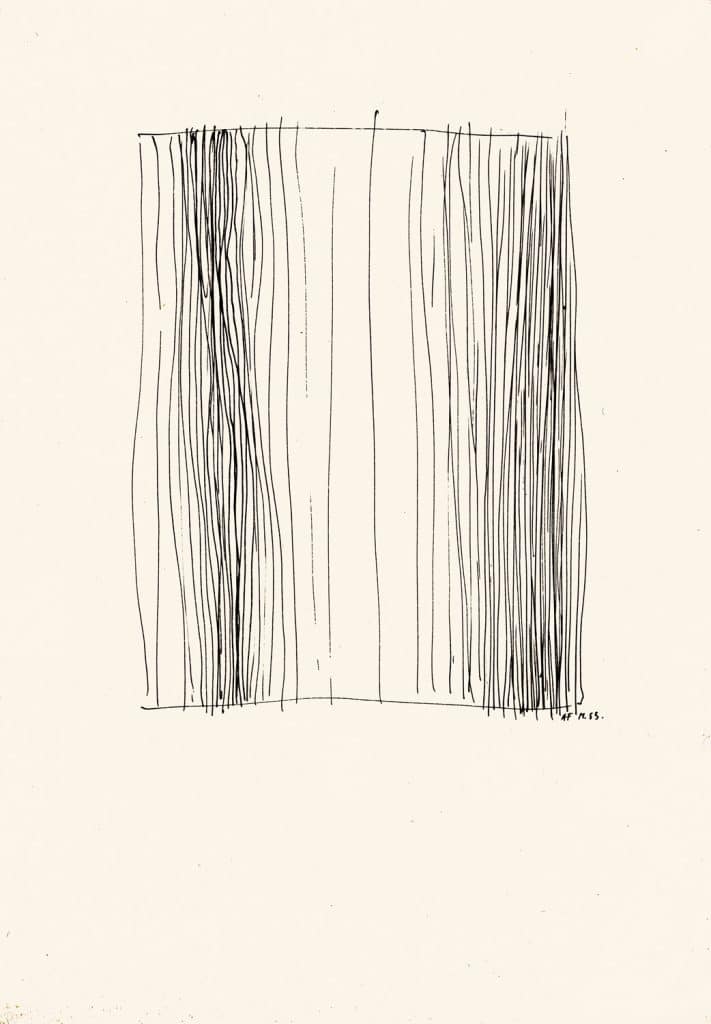UNTITLED
1953
PEN DRAWING WITH INK ON PAPER
24,5 x 17 cm
Today, almost 70 years later, when we look at this fine pen and ink drawing by the 18-year-old pattern draughtsman Andreas Felger, who worked in the textile production department of Pausa AG in Mössingen, it is no longer only with a view to his designs for fabric prints at the time, but also against the background of his opulent oeuvre, which the painter, woodcutter, sculptor and designer has created since then, including above all his abstract works created from 1985 until today. One can see in this drawing reduced, in nuce, much of what is also elaborated in complex forms in Felger’s large-format oil paintings.
The thin sheet, now slightly yellowed by ageing, has regular edges that find an echo in the edge of the vertical rectangle, which the draughtsman has placed centrally but clearly above the geometric centre in the picture format. The irregularity of the boundaries of the rectangle are continued in the lines within it. The viewer senses the handwritten design of the strokes, the ductus. Like the artist’s hand guides the pen, the line guides the viewer’s eye. And in between there is almost nothing to be seen.
It is precisely for this reason, however, that it becomes easier to recognise what makes up many abstract works, even if it is often difficult to find words for them: Form condensations versus form openings or expansions. Emptiness, the white ground of the paper, becomes space because the condensations visualise materiality, structure, substance. The longer one looks at these lines, the easier it is to think of the rectangle as sculptural, to associate organic lines, for example a wood grain. The centre of the leaf catches the light (or reflects it on the white surface), to the sides the intersections of the lines darken the surface. This does not happen symmetrically either, but horizontally shifted slightly to the right, an irregularity that corresponds with the vertically shifted placement of the rectangle on the sheet. In this way, the representation gains weight in places, while in others it remains light and as immaterial as a white sheet can be.
A year after this drawing (which is only one of a larger group of small-format pen and ink drawings that could easily be assembled into a portfolio) was made, Andreas Felger went to Munich to study art at the Academy for four years. The present drawing testifies to the beginning of the search for the path from the craft of designing to artistic composition. The artist remained true to the basic concepts of forms: regular/irregular, condensed/opened, light/shadowed, light/weighty, even in later years; the elementary relationships they denote still determine his compositions today.
by Marvin Altner

